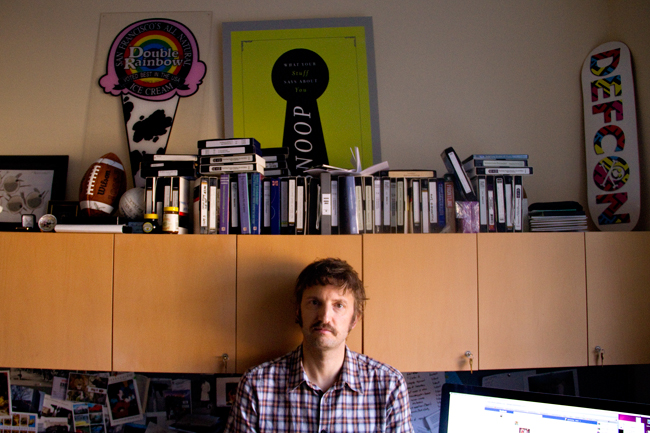Editor’s note: This is the first in a biweekly series showcasing the many fascinating projects undertaken by UT faculty.
We take for granted that the environments people construct for themselves – from bedrooms to Facebook profiles to music preferences – can help us understand who they are. Why else would we poke through someone’s stuff, Facebook-stalk an acquaintance or deride a friend for listening to Creed?
Ten years ago, UT psychology professor Sam Gosling, author of “Snoop: What Your Stuff Says about You,” set out to see if people really learn from others’ personal spaces as much as they think.
“We all form these impressions,” Gosling said. “The studies I did were asking ‘When are those impressions accurate?’”
In 2002, Gosling conducted a study where he had a group of observers rate others on five personality dimensions judging solely from the contents of their physical environments — either their bedroom or work spaces.
He then compared these ratings with the occupants’ self-rating and ratings of those who knew the occupant. It turned out that the stuff we own really does say a lot about us.
For example, Gosling found that rooms with distinctive objects, a wide variety of objects and original art on the walls are likely to belong to sensation seekers who are open to new experience, while a tidy and organized space suggests an occupant who is dependable, hardworking and task-focused.
Though the study, by and large, affirmed what Gosling calls our “snooping” abilities, it also showed that people are better at snooping out certain personality traits than others.
In both offices and bedrooms, observers were best at rating occupants on a trait called openness, which denotes creativity, adventurousness and a readiness to challenge authority. In his study, the possessions of these sensation seekers represented broad interests and were often odd.
For example, in one room, Gosling found a bedside lamp made out of a bottle of vodka and Prozac containers.
People also make many of the same mistakes when judging character, usually based on common, false stereotypes, Gosling said.
Observers who knew they were in a woman’s room often overestimated how sympathetic and considerate the occupant was.
This is not the whole story, though. Stereotypes sometimes lead to errors, but they also help us categorize our objects and people in essential ways we hardly notice because, as Gosling put it, “they are so obviously right.”
“Take this chair,” Gosling said. “You just assume using a stereotype of chairs that it is alright to sit on, that it won’t collapse or swim away or catch fire. I don’t say, ‘Well, how oppressive of you to make those judgments about that chair. You should get to know each chair on its own individual merits.’ For most objects, we just don’t need to do that.”
After researching physical environments, Gosling began looking at environments in a more general sense, studying people’s impressions of Facebook profiles and music preferences. In a Facebook study, Gosling tried to find out whether people strive to accurately represent themselves in their Facebook profiles or try, instead, to project an enhanced version of themselves.
The findings showed no evidence that people successfully misrepresent themselves in their profiles. Of course, it’s possible that they are trying and failing, said Gosling, but it is more likely that most people on Facebook aren’t trying to be something they’re not.
Instead, he said, the control people have over their profiles mirrors the kind of control we all exercise in everyday life, during face-to-face conversations and phone calls.
“People sometimes think, ‘Oh, you’re just creating a false impression,’ because you only check in when you’re at the cool place, not the cheesy place, and you have photos of you doing fun, cool, interesting things,” Gosling said. “But that’s no different from what we do in everyday life and everybody knows it. It’s part of the social norm.”
For Gosling, his research on personal spaces has always been about more than finding out how well someone can snoop through someone’s stuff or draw inferences from Facebook photos. It is about seeing how people relate to their environment, he said.
Gosling is currently collaborating with Christopher Travis, a local architect and creator of a website called Truehome.net that helps architects take the client’s psychology into account when designing their spaces.
According to Gosling, Travis uses psychology in a way that is unprecedented in architectural profession. In “Snoop,” Gosling describes how, in his home plans, Travis labels rooms with the feelings he wants the space to evoke for clients. In one plan, for example, a dining room was meant to evoke “friendship” and a bedroom was labeled “privacy, passion and reflection.” Research in psychology lays the groundwork for practical innovations like Travis’, Gosling said.
“It helps us understand how people construct the spaces around them in a broader sense,” he said. “It tells us how we use space to regulate how we think and feel, and to put out messages in the world around us that are consistent with our moods and our thoughts and our values and our goals.”





















